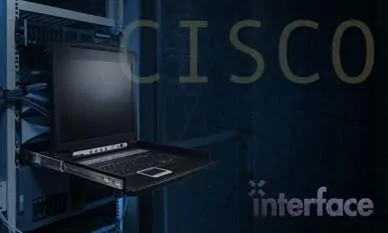
x
Course:
Outline
Module 1: Overview
- Lesson 1: Review of Unified CCX Architecture, Components, Call Flow, Administration, Script Editor
- Lesson 2: New/Changed Features in Unified Contact Center Express
- Lesson 3: Provisioning an Application
- Lesson 4: Using the Script Editor
- Lesson 5: Creating a Basic Contact Center Application
Module 2: CCX Application Development Tools and Techniques
- Lesson 1: Recording Prompts
- Lesson 2: Emergency/Status Recording
- Lesson 3: Creating Holiday Subflows
- Lesson 4: Creating Default Scripts
- Lesson 5: Manipulating and Speaking Data
- Lesson 6: Manipulating Dates and Times
- Lesson 7: Manipulating Languages
- Lesson 8: Creating Open and Closed State Scripts
Module 3: Help Desk Labs
- Lesson 1: Creating a Help Desk Script
- Lesson 2: Implementing Best Contact Center Practices
- Lesson 3: Implementing Expected Wait Time Techniques
- Lesson 4: Implementing Position in Queue Techniques
- Lesson 5: Implementing Overflow Routing Techniques
Module 4: Finesse Applications
- Lesson 1: Manage Finesse Desktops and Teams
- Lesson 2: Implementing CM-Based Call Recording
- Lesson 3: Using Finesse 3rd Party Gadgets
- Lesson 4: Finesse Web Chat and Agent Email
Module 5: Caller Callback Techniques
- Lesson 1: Scripting for Caller Callback when Contact Center is Less busy
- Lesson 2: Scripting for Session Management and Using Finesse Call Variable Layouts
- Lesson 3: Scripting for Caller Callback - Scheduled by Caller
- Lesson 4: Scripting for Web-originated Callbacks
Module 6: Premium Applications
- Lesson 1: ASR/TTS Technology
- Lesson 2: XML Techniques
- Lesson 3: Java Objects
- Lesson 4: Using Auto Attendant
- Lesson 5: Outbound Preview Dialing
Module 7: Example Optional Advanced Techniques
- Lesson 1: Using ASR/TTS in Script Applications
- Lesson 2: Using XML Techniques
LABS:
Module 1: Overview
- Lab 1-1: Provision Your First Application
- Lab 1-2: Using the CCX Script Editor
- Lab 1-3: Create a Basic Contact Center Application
Module 2: Application Development Tools and Technique
- Lab 2-1: Recording Prompts
- Lab 2-2: Add Emergency/Status Recordings
- Lab 2-3: Create Holiday Subflows
- Lab 2-4: Create Default Scripts
- Lab 2-5: Manipulate and Speak Data
- Lab 2-6: Manipulate Dates and Time
- Lab 2-7: Manipulate Languages
- Lab 2-8: Create Open/Closed State Script
Module 3: Help Desk Labs
- Lab 3-1: Create a Help Desk Script
- Lab 3-2: Implement Best Contact Center Practices
- Lab 3-3: Implement Expected Wait Time
- Lab 3-4: Implement Position In Queue Techniques
- Lab 3-5: Implement Overflow Routing Technique
Module 4: Finesse Applications
- Lab 4-1: Manage Finesse Desktops, Teams
- Lab 4-2: Implementing Unified CM - Based MediaSense Call Recording
- Lab 4-3: Using Finesse 3rd Party Gadgets
- Lab 4-4: Configuring Finesse Web Chat and Agent Email
Module 5: Caller Callback Techniques
- Lab 5-1: Implement Caller Callback - When Contact Center is Less Busy
- Lab 5-2: Implement Session Management and Finesse Call Variable Layouts for Callback
- Lab 5-3: Implement Caller Callback - Scheduled
- Lab 5-4: Implement Web-originated Callbacks
Module 7: Additional Application Techniques
- Lab 7-1: Using ASR/TTS in Script Applications
- Lab 7-2: Implement XML Techniques
Audience
- Experienced Unified CCX engineers and administrators charged with building applications.
- Anyone who has attended UCCX and requires more hands-on training on advanced features and troubleshooting
Prerequisites
WHO WILL BENEFIT FROM THIS COURSE?
- Experienced Unified CCX engineers and administrators charged with building applications.
- Anyone who has attended UCCX and requires more hands-on training on advanced features and troubleshooting
RELATED COURSES:
- Deploying Cisco Unified Contact Center Express (UCCX)
What You Will Learn
After completion of this course, students will be able to...
- Describe the Unified CCX product architecture, components, call flow, and general administration techniques
- Describe and apply new Unified CCX features to include Finesse Desktops
- Install and use the CCX Script Editor to create and debug scripts
- Provision and test CCX script applications
- Create application development tools for recording prompts, emergency prompts
- Create administrative tools to open and close contact centers
- Create useful subflow scripts to determine if today is a holiday
- Manipulate and speak dates, times, and data
- Deploy and manipulate languages within script applications
- Create a fully-functional help desk application using best practices
- Display important enterprise data on the Finesse Desktop
- Creatively use the Finesse Administrator to develop Actions and Workflow
- Create and deploy subflow scripts to announce estimated wait times, position in queue
- Invoke exception handling when a script throws an error
- Implement overflow routing techniques
- Create and deploy multiple caller callback techniques
- Deploy XML technology as it is used in contact center scripts
- Implement Java objects acquired from the public domain
- Troubleshoot CCX applications and scripts
